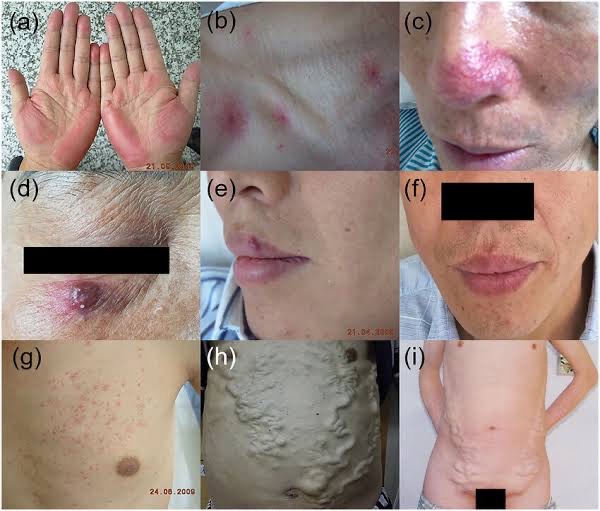The liver is one of the body’s most vital organs, responsible for processing nutrients, filtering toxins from the blood, producing bile, and aiding in digestion. Liver disease encompasses a broad range of conditions that impair the liver’s function, potentially leading to serious health complications. Understanding liver disease’s causes, recognizing its symptoms, and seeking timely treatment is crucial for maintaining liver health.
Causes of Liver Disease
1. Hepatitis: Hepatitis A, B, and C are viral infections that cause inflammation of the liver. Hepatitis B and C, in particular, can lead to chronic liver disease and increase the risk of liver cancer.
2. Alcohol Abuse: Long-term excessive alcohol consumption is a leading cause of liver disease, particularly alcoholic hepatitis and cirrhosis, where the liver becomes scarred and damaged.
3. Non-Alcoholic Fatty Liver Disease (NAFLD): NAFLD is a condition where fat accumulates in the liver, often due to obesity, diabetes, or high cholesterol. It can progress to non-alcoholic steatohepatitis (NASH), which can cause liver inflammation and damage.
4. Genetic Disorders: Conditions like hemochromatosis, which causes excess iron buildup, and Wilson’s disease, which leads to copper accumulation, can result in liver damage if not properly managed.
5. Medications and Toxins: Certain medications, including acetaminophen when taken in excessive doses, and exposure to harmful chemicals can cause liver damage.
Symptoms of Liver Disease

Liver disease can be silent in its early stages, with symptoms often appearing only when the liver is significantly damaged. Common symptoms include:
– Jaundice: Yellowing of the skin and eyes due to the buildup of bilirubin, a waste product processed by the liver.
– Fatigue and Weakness: Persistent tiredness and a general sense of weakness are common in liver disease.
– Abdominal Pain and Swelling: Pain in the upper right abdomen and swelling (ascites) due to fluid buildup can occur as the liver struggles to function.
– Dark Urine and Pale Stools: Changes in the color of urine and stools may indicate liver dysfunction.
– Nausea and Vomiting: Digestive issues, including loss of appetite, nausea, and vomiting, are common in liver disease.
– Easy Bruising and Bleeding: As the liver’s ability to produce clotting factors declines, bruising and bleeding can occur more easily.
Treatment of Liver Disease
Treatment for liver disease depends on the underlying cause and the extent of liver damage. Key approaches include:
1. Lifestyle Changes: For conditions like NAFLD, weight loss, a healthy diet, and regular exercise are essential. Reducing alcohol intake is crucial for those with alcohol-related liver disease.
2. Medications: Antiviral medications can treat hepatitis B and C, while other drugs may be used to manage symptoms or slow the progression of liver diseases.
3. Monitoring and Regular Check-Ups: Ongoing monitoring of liver function through blood tests and imaging studies is important to assess the disease’s progression and adjust treatment as needed.
4. Liver Transplantation: In severe cases of liver failure or cirrhosis, a liver transplant may be the only option. This involves replacing the diseased liver with a healthy one from a donor. Liver transplantation is typically considered when other treatments have failed, and the liver is no longer able to perform its essential functions. While it is a major surgical procedure with significant risks, it can be life-saving for patients with end-stage liver disease.
Prevention of Liver Diseases
Preventing liver disease involves making healthy lifestyle choices and taking precautions to avoid known risk factors:
1. Limit Alcohol Consumption: Drinking alcohol in moderation or abstaining altogether can significantly reduce the risk of liver damage.
2. Maintain a Healthy Weight: A balanced diet and regular physical activity can help prevent obesity and related liver conditions, such as NAFLD.
3. Get Vaccinated: Vaccination against hepatitis A and B can protect against these viral infections, reducing the risk of liver disease.
4. Practice Safe Behaviors: Avoid sharing needles, and practice safe sex to reduce the risk of hepatitis infections. Also, use protective equipment when handling chemicals or toxins.
5. Regular Medical Check-Ups: Routine blood tests and liver function tests can detect early signs of liver diseases, allowing for prompt intervention.
Liver diseases are serious health concern that can lead to life-threatening complications if not addressed early. By understanding the causes, recognizing the symptoms, and adopting preventive measures, individuals can protect their liver health. If you experience symptoms of liver diseases or have risk factors, it is important to consult a healthcare provider for proper evaluation and treatment. Early intervention can often prevent the progression of liver diseases and improve long-term outcomes.